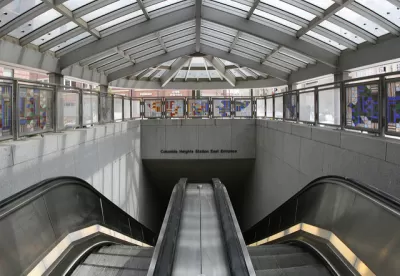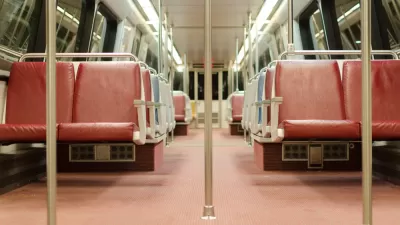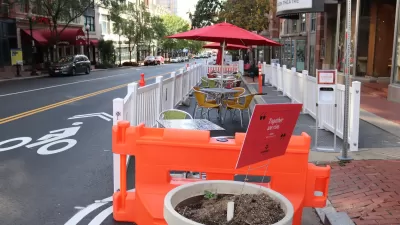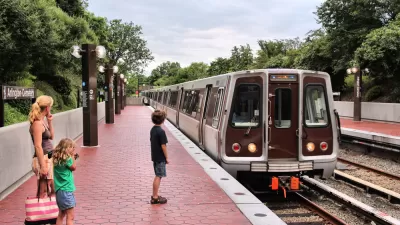The neighborhoods served by Washington D.C.'s Yellow Line have grown and it's time for the train to catch up.

Washington, DC's Mid-City neighborhoods are causing problems for the city's Metro train system. During rush hour, northbound Yellow Line trains need to pull backwards along track they have already covered to accommodate Green Line trains. According to Greater Greater Washington's Alex Cox, this problem was caused by "Massive redevelopment in Mid-City that began around the turn of the century, and has continued at a frantic pace to the present day. That has meant increased demand for service along the Green/Yellow Lines at all hours."
Unfortunately, when these trains were originally designed, they were not intended to run simultaneously at all hours of the day. They share some track and, as Cox points out, adding more track is not necessarily a simple solution because of the specific features along this stretch of track including turns and tunnels that would constrict new construction. It’s likely it would be costly to construct any additional pocket track to allow the trains to run simultaneously.

Planetizen Federal Action Tracker
A weekly monitor of how Trump’s orders and actions are impacting planners and planning in America.

San Francisco's School District Spent $105M To Build Affordable Housing for Teachers — And That's Just the Beginning
SFUSD joins a growing list of school districts using their land holdings to address housing affordability challenges faced by their own employees.

The Tiny, Adorable $7,000 Car Turning Japan Onto EVs
The single seat Mibot charges from a regular plug as quickly as an iPad, and is about half the price of an average EV.

Trump Approves Futuristic Automated Texas-Mexico Cargo Corridor
The project could remove tens of thousands of commercial trucks from roadways.

Austin's First Single Stair Apartment Building is Officially Underway
Eliminating the requirement for two staircases in multi-story residential buildings lets developers use smaller lots and more flexible designs to create denser housing.

Atlanta Bus System Redesign Will Nearly Triple Access
MARTA's Next Gen Bus Network will retool over 100 bus routes, expand frequent service.
Urban Design for Planners 1: Software Tools
This six-course series explores essential urban design concepts using open source software and equips planners with the tools they need to participate fully in the urban design process.
Planning for Universal Design
Learn the tools for implementing Universal Design in planning regulations.
Smith Gee Studio
City of Charlotte
City of Camden Redevelopment Agency
City of Astoria
Transportation Research & Education Center (TREC) at Portland State University
US High Speed Rail Association
City of Camden Redevelopment Agency
Municipality of Princeton (NJ)





























